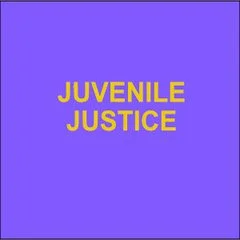By Claire Ely
BACKGROUND: From October 2020 to January 2023 the Youth Justice Board (YJB) undertook a two-year project to better understand prevention and diversion practice and its funding arrangements. Key findings from this project concluded that: youth justice services (YJSs) reported that they deliver a significant amount of prevention and diversion work that is not formally captured in any standardised way; and, the benefits of partnerships and shared visions with other services, including police, health, education, children’s services, courts and wider partners, were consistently highlighted by YJSs and wider justice stakeholders as being essential for effective prevention and diversion. The YJB also found that prevention and diversion practice: ‘is leading to positive outcomes for children. The most common data source to measure prevention and diversion is first time entrants. YJSs provided local data that the work is supporting reductions in first time entrant rates and leading to improvements in children’s lives.’2 However, diversion practice is varied and inconsistent. YJSs feel that children are, in some cases, being unnecessarily criminalised due to differing eligibility criteria for access to services and differing responses to offences, including varied application of the use of No Further Action - Outcome 22. There is also a lack of national and local oversight and governance of prevention and diversion work which needs to be enhanced to improve the evidence-base surrounding current practice. Purpose of the paper There are a number of bodies and organisations that oversee, monitor and scrutinise the delivery of services in the criminal justice system. This paper will focus on how two bodies inspect the work that YJSs and the police undertake with children who receive diversion or an out of court disposal (OOCD), soon to be called out of court resolutions. The bodies responsible for inspecting these agencies are: His Majesty’s Inspectorate of Probation (HMIP) and His Majesty’s Inspectorate of Constabulary and Fire & Rescue Services (HMICFRS). Each of these bodies play an important role in ensuring that YJSs and the police are working with children in a safe and effective way. However, there are considerable differences between the various standards, inspection frameworks and data collection approaches required by YJSs and the police, and not all have a specific focus on diversion and OOCDs, or even children who offend generally. Practitioners tell us that this means they often find themselves confused by what is expected of them, with their practice endorsed by one inspectorate, yet criticised or not inspected by another. This paper forms part of the Youth Endowment Fund’s work to provide guidance to local leaders on evidence-led diversion. It aims to do the following: 1. Provide an overview of the national inspection frameworks (including joint inspections) that currently exist to monitor the delivery of diversion work undertaken by YJSs and the police. 2. Summarise findings and recommendations from recent inspection reports. 3. Outline recommendations for improvements regarding the types of inspections and how these are undertaken as suggested by police, YJS practitioners and inspectors.
London: Centre for Justice Innovation, 2025. 20p.






